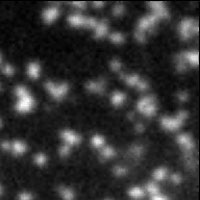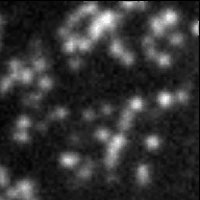| Overview | Cell Structures | Cell Migration | Cell Division |
 |
Random Movements of CCS outside the Active Region |
In the inactive area away from the equator, CCS dots move in random directions. Recording time, 4 min 50 sec. |
 |
|
| . |
| Overview | Cell Structures | Cell Migration | Cell Division |
 |
Random Movements of CCS outside the Active Region |
In the inactive area away from the equator, CCS dots move in random directions. Recording time, 4 min 50 sec. |
 |
|
| . |